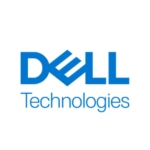I think the most valuable features include it being scalable. We got the product and we have a small environment, but it was able to be scalable to when we started to grow. So I think that was one of the bigger features.
Also, that everything is seamless. And what I mean by that is that you have the components of a Cisco, and you have the components of NetApp; and we have a networking team that is all Cisco certified, and we have a team of NetApp administrators that are also certified. So by not having to reach out and do a whole lot of different training, most of the training had already been done with previous experience. It saved the company a lot more man hours and time to actually get the FlexPod up and running.
That's pretty tricky, because for what we have and for what we use it for, it's actually pretty perfect, to be quite honest. Even when we brought the finished product to our customer, there were really no complaints. They were happy with just having HA, "Hey, if something goes down, we don't lose services." That was their biggest concern. Outside of that they really don't have any complaints at all.
It wouldn't be more FlexPod as a whole, I think for me it would be more NetApp. What I mean by that is, we are a company that likes to do SnapMirrors all over the place, and the customer is always asking when we set up a SnapMirror, "How long does it take or how long do you have left?" And when you've been dealing with NetApp you have to manually do some calculations, make an educated guess. So if there was something like a progress bar for a SnapMirror, so a customer could say, "Hey, what's the percentage?" and I answer, "It's 57%," versus saying, "I think, well, by the size of this volume and the speed of the link..." and that kind of stuff. A progress bar would probably solve all that because they'd like to know, how much more time do we have when we're doing this SnapMirror. I think that would be pretty cool.
For the company it's going on two and a half years. And we're still deploying new ones out.
I think the stability is great. I love the Multipathing for the FlexPlot. You have HA all over the place. You have HA with your storage, you have HA with the blades, you have HA with the Nexus switches as well. You can't ask for more HA than that. So you have time to replace a part, you have time to troubleshoot something without having any downtime. So I think it's excellent.
I have not used tech support yet. All our guys are pretty well versed, especially the knowledge of Cisco and the knowledge of NetApp. And then I forgot to even toss in the knowledge of VMware, because we run VMware on top of four of the blades. Having that group already there at work and having the experience, we all just put our minds together trying to figure it out and it works out pretty well.
It was a little complex but it was because before I started deploying FlexPods I was just in a systems-type realm. But once I completed my initial configuration of one and understood the importance of having HA - once I understood that - I figured out, "Well, cabling, it makes sense." Whatever happens on the A side happens on the B side, and it just started kind of flowing together.
So not too terribly bad. Plus NetApp has real great resources. You can go to their page, you can pull up FlexPod, you can find all the cabling in there for whatever model you have, supported and unsupported, they were really good about that; that was awesome.
The most important criteria when looking at vendors, to me, is honesty about a product. We talked to NetApp folks and they were really good as far as getting us all the information.
It wasn't just that I said I need a solution and they gave me a quote for the biggest solution that I needed to get. They asked, how many people do you have, what kind of expansion do you see yourself going into five years from now, how many services do you want, how is it going to grow. And I thought that was just awesome. Usually they try to sell you the most expensive, like a car salesman. But no, they really looked at our needs, looked at where we were going, picked out a solution.
Even with NetApp, they could've picked a solution that was just NetApp. They looked at it as a whole and said, "For the size of your datacenter, for the users that you're going to have, and to be able to take everybody's unique skill set and put it together, FlexPod will work out for you."
In terms of advice to a colleague, I would definitely tell them to take a look into it. I know most people have their ways with all-in-one systems. In a sense it is that, but in a sense it's not. There are separate components to this system.
If you have a passion for trying to create a better datacenter or if you have a passion for learning new things, FlexPod is the way to go. You're learning about three different technologies, depending on what you use for your hosting, regardless if it's VMware, HyperV, you're learning the stack so you're learning how everything connects.
And, depending on what you do, if you're at a layer-three relationship, you'll be learning about that as well, depending upon how much access you have. But it's definitely an opportunity to satisfy your customer and also increase your knowledge base.






